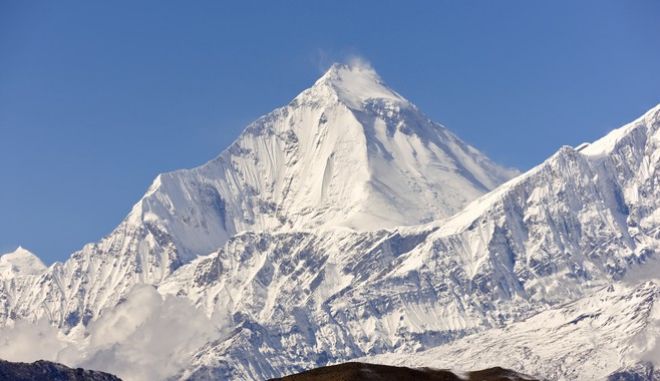
Scott Lehmann and Shayna Unger are a deaf couple who run a channel on YouTube. What makes this channel unique is the recording of their experiences of being deaf and climbing the highest peaks of mountains around the world, as reported by CNN.
Their passion for what they do made them the first deaf couple in the world to successfully climb Mount Everest. During their journey, something unexpected happened: they met the second deaf person to reach the summit of this mountain, Hawari Hashim from Malaysia, who achieved this feat on May 18th. Notably, the first person to accomplish this was the Japanese climber Satoshi Tamura in 2016.
ndeed, the three of them achieved this accomplishment a few years after the Nepal Supreme Court lifted the ban on climbing the highest mountain in the Himalayas. This decision led to prideful celebrations among the global Deaf community.
The chronicle of the ban
In 2017, Nepal announced that it would no longer issue climbing permits to individuals with disabilities, including deaf climbers. Some argued that this decision would create more work for the Sherpas, who assist climbers on their ascent.
This ban sparked reactions among all mountaineers with disabilities. Among them was Hari Budha Magar, born in Nepal, who lost both his legs when he stepped on a landmine while serving in Afghanistan. He was one of the pioneers who fought for the lifting of the ban. Eventually, the ban was lifted in 2018.
Magar successfully summited Mount Everest on May 19th, becoming the first double above-the-knee amputee to complete the ascent.
The experience of the couple Scott Lehmann and Shayna Unger
The environmental conditions prevailing on Everest – strong winds, swirling snow, darkness – make communication difficult for anyone, whether they are deaf or not.
The couple uses the Big, a voice-to-text translation app, to facilitate communication with locals, guides, and other climbers. However, the signal at high altitude is very poor. Additionally, typing becomes challenging at 25,000 feet, as the extremely low temperatures require them to remove their gloves to use the touchscreen.
In the end, Unger and Lehmann decided to assume that no technology would work for them on Everest and started learning to communicate as much as possible without it. They collaborated with the Sherpas, agreeing to use certain visual cues and signals to be able to communicate. Ultimately, they were able to communicate without relying on the app.
“There were many different obstacles we had to overcome to reach Everest, so when we reached the summit, we felt like we defied the odds,” says Unger. “We were truly proud of ourselves,” she adds.
It is noted that near the summit, Lehmann’s mask filled with ice, and she started to panic. However, she managed to communicate with the Sherpa who was with them, and he quickly fixed the mask, bringing the group back on track.
Such examples prove that nothing in life is impossible.
Source: News 24/7



